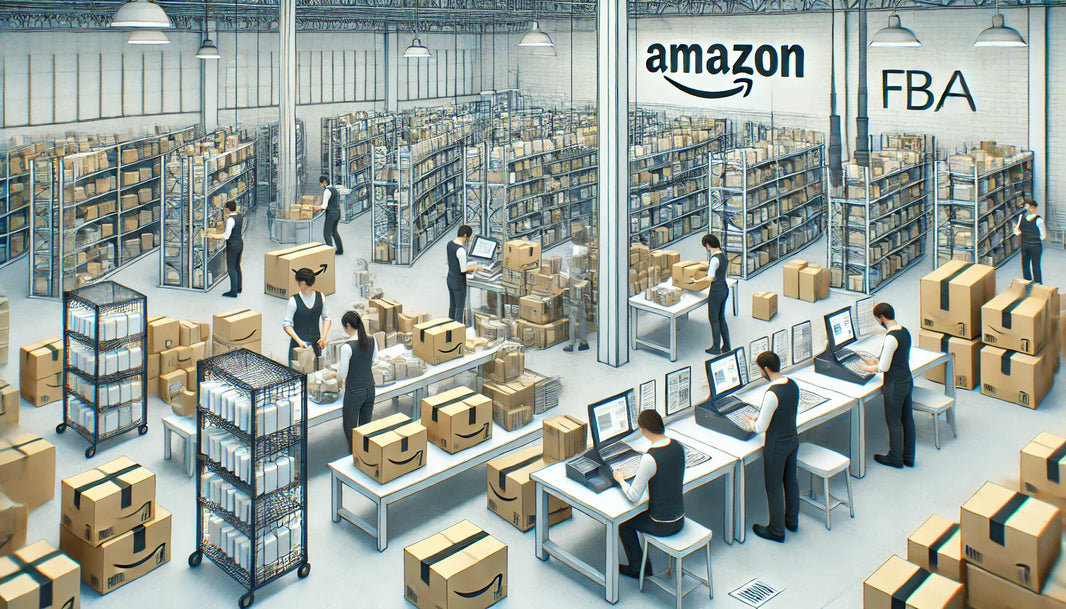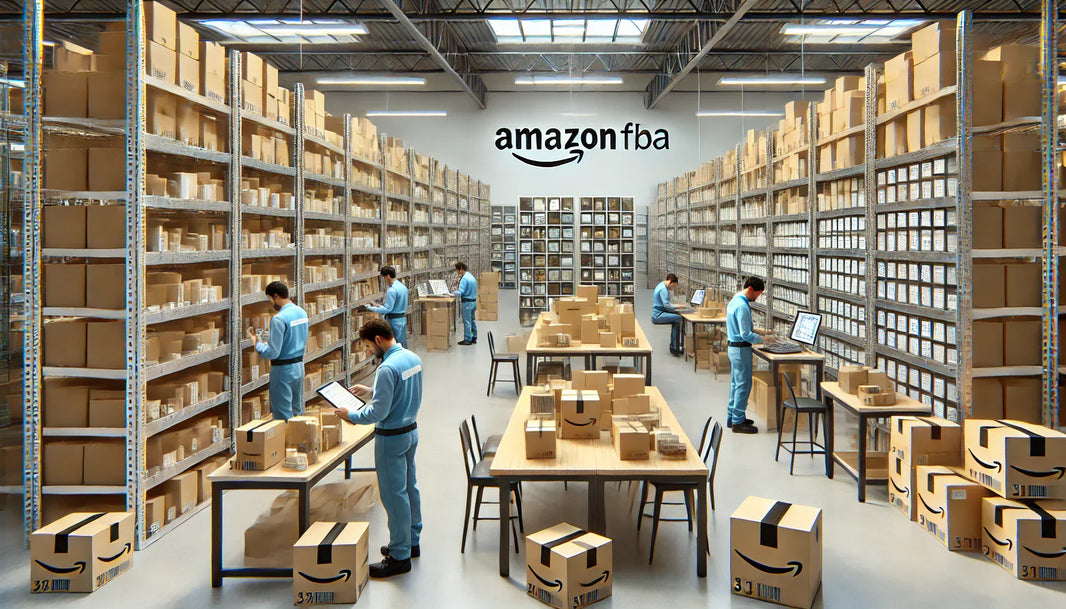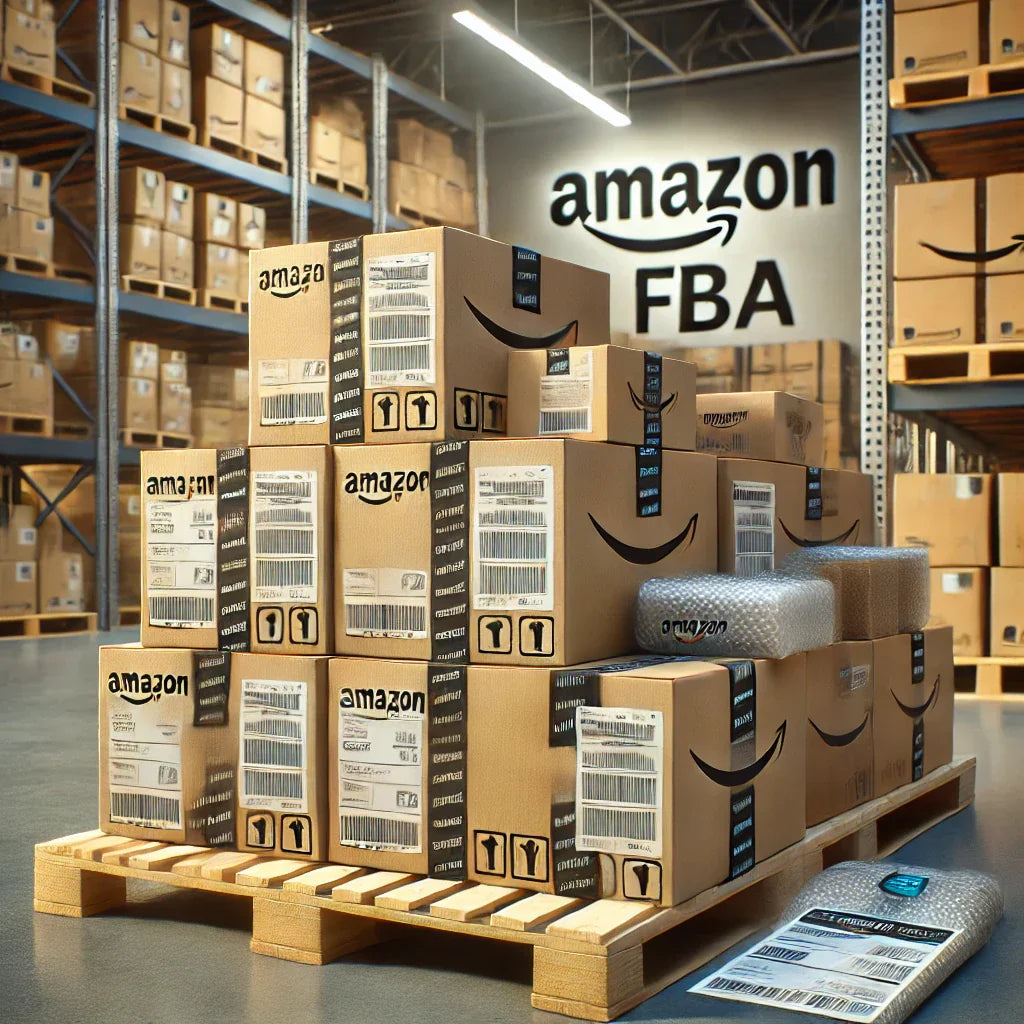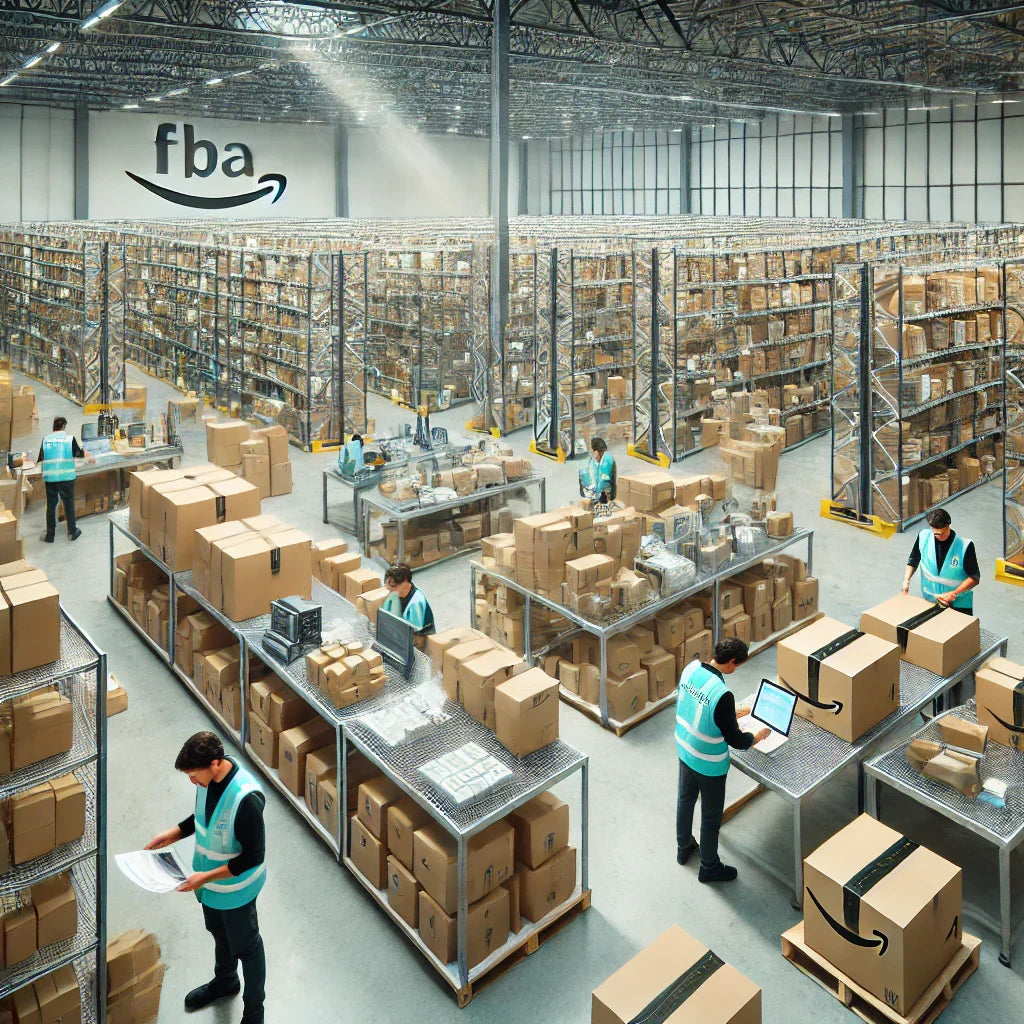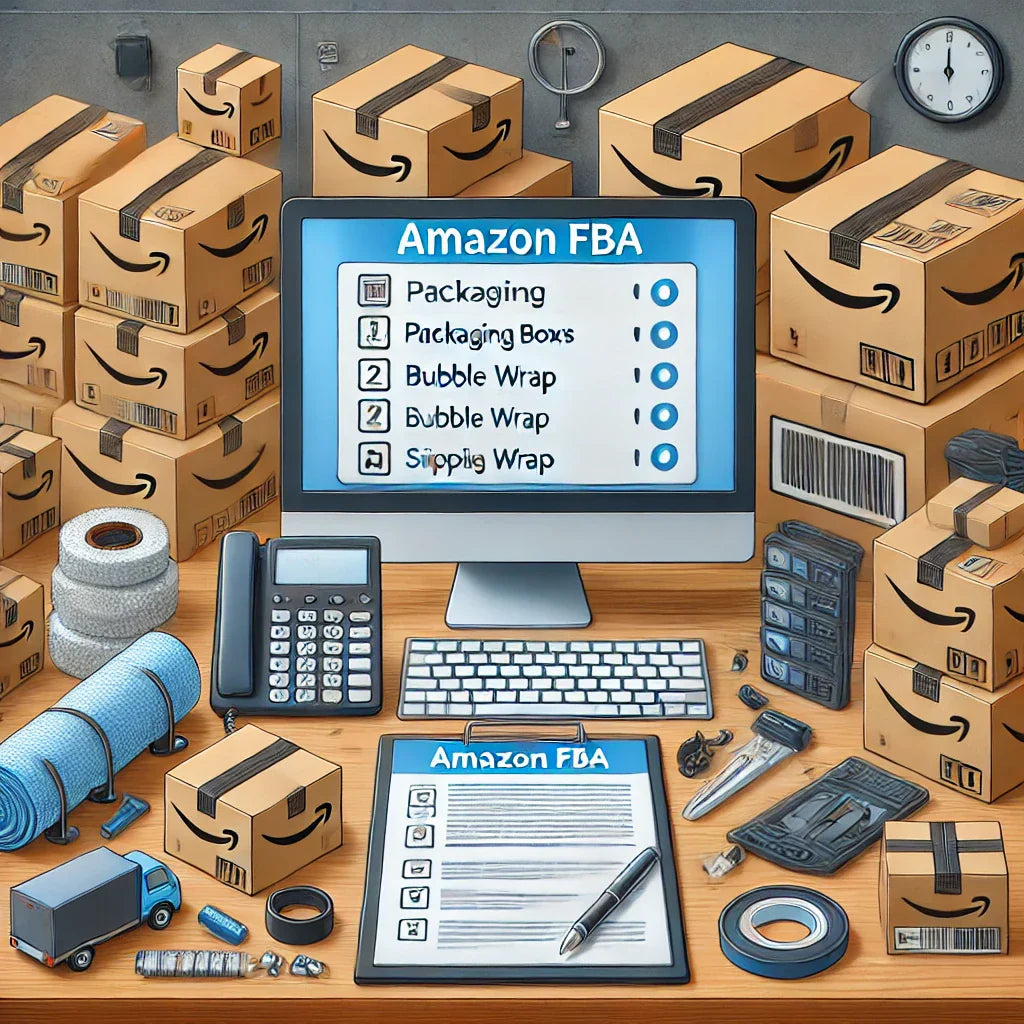Navigating the complex landscape of distribution poses numerous challenges that can significantly impact the efficiency and success of supply chain operations. From managing unpredictable demand and ensuring timely deliveries to dealing with fluctuating transportation costs and optimizing warehouse processes, distribution professionals face a range of obstacles daily. These challenges are compounded by the pressure to meet customer expectations while maintaining profitability. However, understanding these hurdles in depth and implementing strategic solutions can empower organizations to streamline their operations and gain a competitive edge. This article explores common distribution challenges and provides practical insights on overcoming them effectively.

Distribution Challenges: A Detailed Overview
1. Managing Unpredictable Demand
One of the most persistent issues in distribution is dealing with erratic demand fluctuations. Changes in consumer preferences, seasonal demand shifts, and market disruptions can all lead to unpredictable patterns that make inventory planning a daunting task.
- Impact on Inventory Management: Excess inventory ties up capital and increases storage costs, while insufficient stock results in lost sales and customer dissatisfaction.
- Solution Strategies: To counter these issues, businesses can invest in robust demand forecasting tools that leverage historical data and predictive analytics. Implementing flexible supply chain models, such as just-in-time (JIT) inventory, can also help balance stock levels efficiently.
2. Ensuring Timely Deliveries
Customer expectations for fast and reliable deliveries have become the norm in today’s marketplace. Meeting these demands requires precision, efficient routing, and strong collaboration among all supply chain partners.
- Complications in Transportation: Traffic disruptions, driver shortages, and regulatory compliance issues can cause delivery delays. Each of these factors contributes to inefficiencies that can snowball into larger distribution problems.
- Solution Strategies: Employing route optimization software and establishing strategic partnerships with logistics providers can help mitigate delays. Additionally, maintaining a dynamic logistics network capable of rerouting shipments as needed ensures more reliable service.
3. Fluctuating Transportation Costs
Fuel price volatility, rising labor costs, and global economic shifts often result in fluctuating transportation expenses. These costs directly affect the bottom line and require constant monitoring and adjustment.
- Impact on Profit Margins: Unpredictable transportation costs can erode profit margins, especially if companies are locked into long-term contracts without flexibility.
- Solution Strategies: One way to manage this is through cost analysis and negotiation of flexible contracts with carriers. Companies can also explore more sustainable transportation options, such as intermodal shipping or eco-friendly vehicles, to stabilize costs over time.
4. Warehouse Optimization Issues
Warehouse inefficiencies, such as poor layout designs, ineffective picking methods, and disorganized storage, can severely hamper distribution operations. Addressing these issues is crucial to maintaining a high level of service and reducing operational costs.
- Problems with Space Utilization: Inefficient use of space can lead to increased labor and handling times, slowing down the entire distribution process.
- Solution Strategies: Optimizing warehouse layouts to minimize travel time, using advanced picking systems, and implementing automation technologies such as robotic order picking can significantly enhance warehouse efficiency. Additionally, adopting a warehouse management system (WMS) helps streamline operations.
Technological Advancements in Distribution
5. Embracing Automation
Automation is transforming distribution by improving accuracy, reducing labor costs, and accelerating processes. From automated guided vehicles (AGVs) to robotic palletizers, technology has revolutionized how goods are stored, picked, and shipped.
- Benefits of Automation: Automated systems reduce the risk of human error, speed up order fulfillment, and improve overall productivity. For example, robotic picking systems can work around the clock, significantly reducing order cycle times.
- Implementation Strategies: Before investing in automation, companies should conduct a cost-benefit analysis to determine the most effective technologies for their operations. Phased implementation can help ensure a smooth transition and allow for adjustments along the way.
6. Leveraging Data Analytics
Data-driven decision-making is essential in optimizing distribution processes. Analytics provide insights into performance metrics, customer preferences, and market trends, enabling companies to make informed choices.
- Applications in Distribution: Predictive analytics can improve demand forecasting, while real-time tracking data can enhance shipment visibility. Analytics also enable performance benchmarking, helping identify areas for improvement.
- Solution Strategies: Investing in a comprehensive analytics platform can provide the data needed to fine-tune operations. Training staff to interpret and act on these insights is equally important to maximize the benefits of data-driven strategies.
People and Process Challenges
7. Addressing Workforce Shortages
The logistics industry has faced significant labor shortages, affecting distribution efficiency. The aging workforce, high turnover rates, and the physical demands of the job make attracting and retaining talent difficult.
- Impact on Operations: Workforce shortages can lead to delays, errors, and increased labor costs. High turnover disrupts workflow continuity and requires constant training of new employees.
- Solution Strategies: Companies can offer competitive compensation, invest in workforce training programs, and create a positive work environment to retain talent. Automation can also alleviate labor shortages by reducing the dependency on manual labor.
8. Streamlining Processes for Efficiency
Inefficient processes can bog down the entire supply chain, leading to wasted time and resources. These inefficiencies are often a result of outdated practices and a lack of integration between different parts of the supply chain.
- Identifying Bottlenecks: Conducting regular process audits can help pinpoint inefficiencies and identify opportunities for improvement.
- Solution Strategies: Implementing Lean practices, such as value stream mapping, can streamline workflows. Cross-functional teams should be empowered to suggest and implement improvements, fostering a culture of continuous improvement.
Sustainability Challenges in Distribution
9. Reducing Environmental Impact
Sustainability is no longer optional in today’s business environment. Companies are under increasing pressure from consumers and regulators to reduce their carbon footprint and adopt more eco-friendly practices.
- Challenges Faced: Sustainable distribution practices, such as reducing emissions and minimizing waste, often require significant upfront investments.
- Solution Strategies: Using electric or hybrid delivery vehicles, optimizing packaging to reduce waste, and consolidating shipments can help minimize environmental impact. Companies can also invest in carbon offset programs to balance their emissions.
Building Resilient Supply Chains
10. Risk Management and Resilience Planning
Supply chain disruptions, such as natural disasters, geopolitical tensions, or pandemics, have highlighted the need for robust risk management strategies. Companies must be prepared to adapt quickly to changing circumstances.
- Impact of Disruptions: Disruptions can cause delays, increase costs, and affect service levels, potentially damaging the company's reputation.
- Solution Strategies: Building a resilient supply chain involves diversifying suppliers, investing in risk assessment tools, and creating contingency plans for various scenarios. Collaboration with partners to share information and resources can also strengthen resilience.
Future Outlook: Preparing for Emerging Trends
11. The Rise of Omnichannel Distribution
Consumer expectations for seamless experiences across multiple channels are reshaping distribution strategies. Omnichannel distribution requires a cohesive approach to manage inventory across brick-and-mortar stores, e-commerce platforms, and other sales channels.
- Challenges in Integration: Synchronizing inventory and ensuring real-time visibility are major hurdles.
- Solution Strategies: Implementing integrated supply chain software that provides a single view of inventory can simplify omnichannel management. Advanced technologies, such as RFID, can also improve inventory accuracy across different channels.
12. Adapting to Technological Innovations
The rise of new technologies, such as the Internet of Things (IoT) and blockchain, is set to further transform distribution. IoT enables real-time tracking of goods, while blockchain ensures transparency and security in transactions.
- Opportunities and Challenges: While these technologies offer immense benefits, their implementation requires significant investment and change management.
- Solution Strategies: Pilot programs can help test the feasibility of new technologies before full-scale implementation. Collaborating with technology providers to stay ahead of trends can also give companies a competitive edge.

Detailed Strategies for Overcoming Distribution Challenges
13. Advanced Demand Forecasting Techniques
As we’ve explored, managing unpredictable demand is crucial for efficient distribution. While basic forecasting tools provide a foundation, businesses can benefit immensely from implementing more advanced methodologies.
- Machine Learning Algorithms: By employing machine learning models, companies can analyze vast amounts of data, identify hidden patterns, and predict demand with greater accuracy. These models continuously improve by learning from new data, thus refining forecasts over time.
- Scenario Planning: Another effective method is to engage in scenario planning. This involves creating various demand scenarios—best case, worst case, and most likely case—and developing strategies for each. This proactive approach allows companies to quickly pivot and adjust their supply chain strategies as needed.
- Collaborative Forecasting: Involving key partners, such as suppliers and retailers, in the forecasting process ensures a more comprehensive view of market trends. This collaboration can lead to better-aligned production schedules and improved stock availability.
14. Enhancing Transportation Efficiency
Transportation efficiency plays a pivotal role in meeting delivery expectations and controlling costs. Here’s a deeper dive into how distribution networks can be optimized.
- Real-Time Freight Management: Real-time tracking systems enable logistics managers to monitor shipments continuously, identify potential delays, and make on-the-fly adjustments to routes. This level of visibility improves customer satisfaction and reduces delivery disruptions.
- Load Optimization: Maximizing vehicle loads is essential for cost savings and sustainability. Advanced load planning software can help logistics teams determine the best way to stack and pack shipments, ensuring that trucks are utilized to their full capacity.
- Last-Mile Delivery Innovations: Last-mile delivery remains one of the most expensive and challenging aspects of distribution. Companies are experimenting with innovations such as drone deliveries, autonomous vehicles, and the use of smart lockers for package drop-offs to streamline this process. By leveraging these technologies, businesses can lower costs and improve delivery speed.
Overcoming Labor Shortages in Logistics
15. Workforce Automation and Augmentation
The labor shortages in the logistics sector are forcing companies to rethink traditional approaches to hiring and employee retention. Automation and workforce augmentation have emerged as critical solutions.
- Automated Sorting and Picking: Technologies like conveyor systems, automated picking robots, and drones for inventory management have become increasingly popular. These solutions not only reduce dependency on human labor but also speed up warehouse operations.
- Wearable Technology: Devices such as smart glasses and wrist scanners assist warehouse workers by providing real-time data and hands-free access to critical information. This not only improves efficiency but also reduces the physical strain on workers, making the job more manageable and appealing.
- Flexible Workforce Models: Utilizing temporary or gig workers during peak seasons can alleviate workforce shortages. Companies should establish partnerships with staffing agencies that specialize in logistics, ensuring a readily available pool of trained personnel.
16. Developing a Skilled Workforce
While automation is reshaping the industry, human talent remains indispensable. Investing in a skilled workforce can yield long-term benefits.
- Training and Development Programs: Offering ongoing training in areas like inventory management, the use of new technologies, and safety procedures can increase productivity and employee satisfaction. Upskilling initiatives help workers adapt to technological advancements and reduce turnover.
- Employee Engagement and Retention: High turnover in distribution centers is costly. Companies can improve retention by offering career growth opportunities, creating a positive work culture, and recognizing employee achievements. Furthermore, implementing feedback mechanisms where employees can voice concerns and suggestions fosters engagement and loyalty.
Warehouse Optimization Revisited
17. Advanced Warehouse Management Systems (WMS)
An advanced WMS can revolutionize warehouse operations, ensuring that every aspect—from receiving to order fulfillment—is optimized for efficiency.
- Inventory Accuracy and Management: A WMS provides real-time updates on inventory levels, helping reduce overstock and stockouts. By implementing cycle counting instead of annual physical inventory checks, businesses can maintain more accurate records.
- Order Picking Optimization: There are several order picking strategies, such as batch picking, zone picking, and wave picking, that can be customized to fit a warehouse’s specific needs. Each method has its advantages, depending on order volume and warehouse layout.
- Cross-Docking: Cross-docking minimizes storage time by transferring products directly from inbound to outbound transportation. This reduces labor costs, shortens delivery times, and improves supply chain agility.
18. Layout and Space Utilization
Optimizing warehouse layout is essential to reducing travel time and increasing productivity.
- Vertical Storage Solutions: Utilizing vertical space with the help of mezzanine floors or high-rise racking systems can free up valuable floor space. Automated vertical carousels and lifts can further improve space utilization and make retrieval faster.
- Dynamic Slotting: Dynamic slotting involves adjusting the placement of items in the warehouse based on demand patterns. High-demand products are placed in easily accessible areas, while slower-moving items are stored further back. This reduces pick time and labor costs.
Sustainability in Distribution Operations
19. Green Logistics Initiatives
Sustainability is now a core aspect of distribution strategies, driven by consumer demand and regulatory requirements. Implementing green logistics initiatives can reduce environmental impact while offering long-term cost savings.
- Eco-Friendly Packaging: Switching to biodegradable or recyclable packaging materials can significantly reduce waste. Companies can also optimize packaging to minimize excess material while protecting products.
- Electric and Hybrid Fleets: Transitioning to electric or hybrid delivery vehicles not only reduces emissions but also benefits from lower fuel and maintenance costs. Businesses should evaluate government incentives that support fleet electrification.
- Energy Efficiency in Warehouses: Implementing energy-efficient lighting, using renewable energy sources, and optimizing climate control systems can reduce a warehouse's carbon footprint. Smart energy management systems can monitor and reduce energy consumption.
20. Reverse Logistics and Waste Reduction
Efficient management of product returns and recycling processes is critical for a sustainable supply chain.
- Streamlining Returns Management: Returns are inevitable in distribution, especially in e-commerce. Companies should establish efficient reverse logistics systems to minimize costs. Automating returns processing can speed up the assessment and restocking of products.
- Recycling and Waste Management: Setting up on-site recycling programs and partnering with waste management companies for efficient disposal of materials can further enhance sustainability. Businesses can also explore circular economy practices, where returned or defective products are refurbished or repurposed.
Risk Management and Building a Resilient Supply Chain
21. Proactive Risk Mitigation Strategies
The unpredictability of global events necessitates a proactive approach to risk management in distribution.
- Diversified Supplier Networks: Relying on a single supplier can be risky, especially in times of disruption. Businesses should build relationships with multiple suppliers across different regions to reduce risk exposure.
- Risk Assessment Tools: Leveraging digital tools for risk assessment and scenario analysis helps identify vulnerabilities within the supply chain. These tools can provide actionable insights and guide decision-making during crises.
- Stockpiling and Safety Stock: While lean inventory practices are beneficial, certain critical items may require safety stock. Strategic stockpiling, especially for high-demand or long-lead-time products, can provide a buffer against unexpected disruptions.
22. Enhancing Communication and Collaboration
Strong communication and collaboration among supply chain partners are vital for building resilience.
- Integrated Communication Platforms: Cloud-based platforms that provide real-time updates and facilitate information sharing can significantly improve collaboration. These systems can be integrated with existing ERP and WMS solutions for seamless data flow.
- Vendor Collaboration Programs: Collaborating with vendors on forecasts and production schedules ensures alignment and minimizes the risk of supply disruptions. Joint planning meetings and shared KPIs can strengthen these partnerships.

The Role of Innovation in Distribution
23. Blockchain for Supply Chain Transparency
Blockchain technology is transforming supply chain management by enhancing transparency and security. Each transaction or movement of goods is recorded in a secure, immutable ledger.
- Applications in Distribution: Blockchain can be used to track products from production to delivery, ensuring authenticity and reducing the risk of counterfeiting. This is particularly valuable in industries like pharmaceuticals and luxury goods.
- Challenges in Adoption: Despite its benefits, blockchain adoption comes with challenges, such as high implementation costs and the need for industry-wide collaboration. Companies should weigh the advantages against potential obstacles before proceeding.
24. The Internet of Things (IoT) for Real-Time Monitoring
IoT technology plays a crucial role in modernizing distribution operations, providing real-time visibility and automating processes.
- Smart Warehouses: IoT-enabled sensors can monitor temperature, humidity, and the condition of goods in storage, ensuring optimal conditions. Automated alerts notify managers of deviations, allowing for quick action.
- Asset Tracking: Using GPS-enabled devices, companies can track the exact location of shipments and assets. This not only improves security but also enhances customer service by providing accurate delivery updates.
25. Artificial Intelligence and Predictive Maintenance
Artificial intelligence (AI) has vast potential in optimizing distribution, from predictive maintenance to customer service.
- Predictive Maintenance: AI can analyze equipment performance data to predict failures before they occur, reducing downtime and maintenance costs. This is particularly useful for automated warehouse equipment and delivery vehicles.
- Chatbots and Customer Support: AI-driven chatbots can handle routine customer inquiries, such as order status updates, freeing up human agents to manage more complex issues. AI can also analyze customer feedback to identify trends and areas for improvement.
Meeting Future Challenges in Distribution
26. Preparing for Global Supply Chain Shifts
Global supply chains are continually evolving, influenced by trade policies, economic shifts, and advancements in technology. Companies must stay agile and anticipate changes.
- Reshoring and Nearshoring: The COVID-19 pandemic highlighted the risks of depending on geographically distant suppliers. Reshoring (bringing production back to the company's home country) or nearshoring (relocating operations to nearby regions) can mitigate these risks. While these strategies may increase manufacturing costs, they provide greater control and reduce the vulnerability to global disruptions.
- Tariffs and Trade Regulations: Changing trade policies and tariffs can impact supply chain strategies. Staying informed and working with trade compliance experts helps businesses anticipate and respond to regulatory changes. In some cases, free trade agreements can provide opportunities to minimize costs.
27. Adapting to Shifts in Consumer Expectations
Consumer expectations around delivery speed, transparency, and sustainability continue to rise. Distribution strategies must evolve to meet these demands without compromising efficiency.
- Personalized Delivery Options: Consumers now expect to choose from a range of delivery options, such as same-day, next-day, or designated time slots. Companies must integrate flexible delivery choices into their logistics networks. This might involve partnering with multiple courier services to offer a wider array of options.
- Transparent Communication: Real-time order tracking is no longer a luxury but a necessity. Customers expect to know where their orders are at all times. Businesses should invest in user-friendly tracking systems and proactive communication that alerts customers about potential delays.
- Sustainable Practices: As environmental concerns grow, consumers are becoming more eco-conscious. Businesses can appeal to this demographic by offering carbon-neutral shipping, using sustainable packaging, and being transparent about their environmental impact.
Leveraging Technology to Drive Distribution Efficiency
28. Cloud-Based Supply Chain Management
Cloud technology has become a game-changer for distribution, offering real-time data access and simplifying collaboration across global teams.
- Benefits of Cloud Integration: Cloud-based platforms enable businesses to scale quickly, optimize costs, and ensure data security. Features such as inventory management, demand forecasting, and order processing are seamlessly connected, providing a holistic view of the supply chain.
- Data Security Concerns: With the benefits of cloud technology come challenges, particularly concerning data security. Companies must implement stringent cybersecurity measures, such as encryption and regular vulnerability assessments, to protect sensitive information.
29. Advanced Robotics and Automation
The adoption of robotics and automation technologies continues to revolutionize distribution and warehouse operations.
- Autonomous Vehicles: Automated guided vehicles (AGVs) and drones are increasingly being used for material handling and order fulfillment. These technologies minimize labor costs, reduce human error, and increase safety in warehouse environments.
- Cobots (Collaborative Robots): Unlike traditional industrial robots that operate independently, cobots work alongside human workers, enhancing productivity without replacing human labor. They can handle repetitive tasks such as sorting and packing, allowing employees to focus on more complex activities.
- Robotic Process Automation (RPA): RPA is used to automate back-end processes like order processing and inventory updates. It helps reduce manual errors and speeds up workflows, which is crucial for businesses dealing with high order volumes.
Integrating Sustainability Into Distribution Strategy
30. Sustainable Transportation Initiatives
Transportation remains a significant contributor to greenhouse gas emissions. Companies are actively seeking ways to minimize their environmental impact through innovative practices.
- Alternative Fuel Vehicles: The use of alternative fuels, such as biodiesel, compressed natural gas (CNG), and hydrogen fuel cells, is gaining momentum. Companies that adopt these technologies can achieve significant reductions in emissions while also benefiting from government incentives.
- Efficient Route Planning: Software solutions that optimize delivery routes can minimize fuel consumption and reduce carbon emissions. These tools consider factors such as traffic, road conditions, and delivery time windows to plan the most efficient routes.
- Urban Distribution Hubs: Establishing small, strategically located distribution hubs in urban areas reduces the distance to the end customer. This setup can lead to more efficient deliveries, lower emissions, and reduced congestion in city centers.
31. The Circular Economy in Distribution
The concept of a circular economy emphasizes minimizing waste and making the most of resources. Distribution networks play a critical role in this transition.
- Reusable Packaging: Instead of single-use packaging, companies can adopt reusable solutions, especially for business-to-business (B2B) transactions. Implementing a returnable packaging system requires an efficient process for collecting and refurbishing used packaging.
- Product Life Cycle Management: Effective distribution strategies can support product recycling and refurbishment. For instance, creating a robust system for collecting and transporting used or defective products back to the manufacturer enables efficient recycling and repurposing.
- Waste Reduction Initiatives: Auditing the entire distribution process for waste production points can highlight areas for improvement. Implementing recycling programs and collaborating with waste management partners ensures that waste is minimized and resources are reused.
Strengthening Supplier Relationships
32. Collaborative Planning, Forecasting, and Replenishment (CPFR)
Collaboration with suppliers is essential to improving supply chain efficiency and reducing the risk of stockouts or overstocking.
- How CPFR Works: CPFR involves sharing forecasts, sales data, and inventory levels with suppliers to create a more accurate supply chain plan. This collaboration helps align production schedules and improve inventory management.
- Technology in CPFR: Digital platforms facilitate real-time data sharing and communication, making CPFR more effective. These systems can also analyze performance metrics to identify areas for improvement in supplier relationships.
- Mutual Benefits: Both parties benefit from CPFR. Suppliers gain better visibility into demand, reducing production inefficiencies, while distributors enjoy improved product availability and lower inventory costs.
33. Building Trust and Long-Term Partnerships
Strong relationships with suppliers are built on trust, communication, and mutual benefit. A solid supplier partnership can provide a competitive advantage in times of supply chain disruption.
- Transparent Communication: Regular communication about forecasts, performance, and upcoming changes is crucial for maintaining trust. Quarterly business reviews and performance assessments can ensure alignment.
- Supplier Development Programs: Investing in supplier training and development can improve product quality and delivery reliability. Companies that work closely with their suppliers to implement Lean practices or quality management systems often see significant benefits.
- Risk-Sharing Agreements: In uncertain economic climates, risk-sharing agreements can provide stability for both parties. For example, a cost-sharing arrangement for raw material price fluctuations can protect suppliers from financial instability while ensuring steady supply for the distributor.
Innovations in Inventory Management
34. Predictive Inventory Systems
Traditional inventory management practices are being replaced by predictive systems that leverage AI and machine learning to anticipate demand.
- Benefits of Predictive Systems: These systems can analyze past sales data, market trends, and external factors (like weather forecasts) to optimize stock levels. By predicting demand spikes or drops, companies can reduce holding costs and minimize stockouts.
- Integrating IoT: IoT sensors can provide real-time inventory data, monitoring product conditions such as temperature and humidity in warehouses. This is particularly useful for perishable goods or sensitive electronics, ensuring they are stored under optimal conditions.
- Reducing Dead Stock: Using AI to analyze inventory turnover rates helps identify slow-moving or obsolete items. Strategies such as promotions or bundling can be employed to clear out these products and free up storage space.
35. Inventory as a Service (IaaS)
IaaS is an emerging model where businesses outsource their inventory management to third-party providers. This approach allows companies to focus on core activities while leveraging the expertise of specialized inventory services.
- How IaaS Works: IaaS providers use sophisticated software to manage stock levels, forecast demand, and automate reordering. Businesses pay for inventory storage and management on a subscription basis, reducing the need for in-house resources.
- Benefits of Outsourcing Inventory: Outsourcing inventory management can lower operating costs, improve order accuracy, and enhance scalability. It’s particularly beneficial for startups or companies experiencing rapid growth that lack the infrastructure to manage inventory efficiently.
- Potential Drawbacks: While IaaS offers many advantages, companies must carefully select providers to ensure reliability and data security. Establishing clear service-level agreements (SLAs) and conducting regular performance reviews can mitigate these risks.

Addressing Distribution Challenges Through Innovation
36. Autonomous Delivery Vehicles
Self-driving trucks and drones are no longer just concepts but are gradually being integrated into distribution networks. These technologies promise significant improvements in efficiency and cost reduction.
- Applications in Distribution: Autonomous delivery vehicles are particularly useful for long-haul transportation and last-mile deliveries. By reducing the need for human drivers, companies can operate around the clock, decreasing transit times and labor costs.
- Regulatory Hurdles: The widespread use of autonomous vehicles faces regulatory challenges. Companies must stay informed about local and national regulations and participate in pilot programs to remain ahead of the curve.
- Safety and Reliability: Safety remains a top concern for autonomous vehicles. Continuous testing and advancements in sensor technology are crucial to ensure these systems operate reliably in various environments.
37. Robotics in Cold Chain Distribution
Cold chain logistics, which involve the transportation of temperature-sensitive products like pharmaceuticals and food, presents unique challenges. Robotics and automation are making these operations more efficient and reliable.
- Automated Cold Storage: Robotic systems designed for cold storage environments can handle tasks such as palletizing, picking, and packing. These robots are built to withstand extreme temperatures, reducing the need for human labor in harsh conditions.
- Temperature Monitoring and Control: Automated systems equipped with IoT sensors provide real-time temperature and humidity data, ensuring that products remain within specified conditions. In case of deviations, alerts are sent to warehouse managers, allowing for immediate action.
- Energy Efficiency in Cold Storage: Running refrigeration units is energy-intensive. Automation systems help optimize energy consumption by only cooling sections of the warehouse that are in use or by using AI to predict and adjust energy usage. This can lead to significant cost savings and a reduced carbon footprint.
The Future of Warehouse Automation
38. Artificial Intelligence for Predictive Maintenance
AI is being increasingly utilized to ensure that warehouse machinery operates smoothly and without interruption.
- How Predictive Maintenance Works: AI systems analyze data from sensors attached to warehouse machinery to predict when maintenance is needed. This proactive approach minimizes downtime, as equipment can be serviced before a breakdown occurs, thereby keeping operations running efficiently.
- Examples of Application: Conveyor belts, automated picking systems, and refrigeration units all benefit from predictive maintenance. By avoiding unplanned downtime, companies can ensure that customer orders are processed and shipped without delay.
- Long-Term Benefits: While the initial investment in predictive maintenance technology can be high, the return on investment is often significant. Reduced repair costs, lower risk of operational disruptions, and prolonged equipment lifespan all contribute to financial savings.
39. The Role of AI in Demand Forecasting
Demand forecasting has been transformed by AI, making predictions more accurate and actionable.
- AI-Driven Analytics: Traditional forecasting methods often struggle to account for complex variables such as shifting consumer behavior or global market trends. AI-driven models can process these data points, learn from them, and make precise predictions. These forecasts are updated continuously, allowing companies to adjust their inventory in near real-time.
- Using AI to Reduce Wastage: Overordering or underordering inventory is a costly problem. By using AI to forecast demand accurately, businesses can reduce excess stock and minimize wastage. This is especially beneficial for perishable goods, where inventory mismanagement can lead to significant financial and environmental waste.
Blockchain Technology for Supply Chain Transparency
40. Improving Accountability and Traceability
Blockchain technology offers an immutable, decentralized ledger that is ideal for tracking goods throughout the supply chain.
- How Blockchain Works: Each transaction or movement of a product is recorded on the blockchain, creating a transparent and tamper-proof history. This technology ensures that all parties—manufacturers, distributors, and end customers—can trust the data recorded.
- Applications in Food Safety: In the food industry, blockchain can be used to track products from farm to table. If a foodborne illness outbreak occurs, blockchain records can identify the source quickly, minimizing the impact on public health and reducing recall costs.
- Combating Counterfeit Goods: In sectors such as luxury goods and pharmaceuticals, blockchain provides proof of authenticity. Consumers can scan a product and view its entire journey, ensuring that it is genuine and has not been tampered with.
41. Challenges and Considerations
Despite its benefits, implementing blockchain in distribution comes with challenges.
- Scalability Issues: As the number of transactions increases, blockchain networks can become slower. Companies must work with technology providers to ensure that their blockchain systems are scalable and efficient.
- Adoption Across the Industry: For blockchain to be truly effective, widespread adoption is necessary. This requires collaboration across supply chain partners, which can be difficult to achieve. Education and clear demonstration of blockchain's benefits are key to encouraging industry-wide implementation.
- Data Privacy Concerns: While blockchain provides transparency, it can also raise data privacy concerns. Companies need to carefully manage which data are visible to all parties and which remain confidential.
Reducing Costs and Improving Efficiency
42. Lean Distribution Strategies
Lean principles, originally developed for manufacturing, are increasingly being applied to distribution to eliminate waste and improve efficiency.
- Just-In-Time (JIT) Distribution: JIT involves keeping minimal inventory and receiving goods only when needed for production or sales. While this reduces holding costs, it requires precise demand forecasting and strong relationships with suppliers. Any disruption can significantly impact the supply chain.
- Kaizen (Continuous Improvement): The concept of Kaizen focuses on making small, incremental improvements to processes. Distribution centers can implement Kaizen by continuously analyzing workflows, gathering employee feedback, and making adjustments to increase efficiency.
- Reducing Lead Times: By mapping the entire supply chain and identifying bottlenecks, companies can implement solutions to reduce lead times. This might involve negotiating better terms with suppliers, improving internal workflows, or using faster shipping methods.
Adaptive Strategies for Global Market Fluctuations
43. Dynamic Pricing and Cost Management
Global economic fluctuations can impact distribution costs, from fuel prices to raw material expenses. Businesses need to adopt adaptive pricing strategies.
- Dynamic Pricing Models: Using data analytics, companies can adjust their prices in real-time based on supply chain costs, demand, and competitor pricing. This model is common in industries like air travel and retail, but it’s becoming more relevant for distribution companies facing variable costs.
- Cost-Plus Pricing: Another approach is cost-plus pricing, where businesses calculate the total cost of a product and then add a markup. While simple, this method needs to be adjusted frequently to remain profitable during periods of economic volatility.
- Negotiating Supplier Contracts: Locking in long-term contracts with key suppliers at fixed rates can protect against cost increases. However, it is important to maintain some level of flexibility, either through clauses that allow for renegotiation or by diversifying the supplier base.
44. Risk Management in an Unpredictable World
Risk management is becoming increasingly critical as global events continue to disrupt supply chains.
- Insurance and Financial Instruments: Companies are turning to insurance products, such as trade credit insurance, to protect against the risk of non-payment or supply chain disruptions. Hedging fuel costs is another strategy to manage volatility in transportation expenses.
- Scenario Analysis: Advanced scenario analysis tools allow companies to simulate various risk scenarios, such as a natural disaster affecting key suppliers or a sudden drop in demand. These simulations help prepare and create action plans that minimize impact.
- Investment in Supply Chain Resilience: More companies are investing in making their supply chains more resilient, whether through diversification of suppliers, holding strategic reserves of critical components, or investing in flexible manufacturing.
Enhancing Customer Experience in Distribution
45. Personalized Customer Service
Exceptional customer service is increasingly becoming a differentiator in the distribution industry.
- Real-Time Support: Offering 24/7 customer support, either through chatbots or live representatives, can greatly enhance customer experience. Customers expect quick resolutions, whether they are inquiring about an order status or reporting an issue.
- Proactive Problem Solving: Businesses can use predictive analytics to identify and address potential issues before they affect customers. For example, if a delivery is delayed, notifying the customer in advance and offering a solution (like a discount or expedited service) can improve satisfaction.
- Flexible Return Policies: An easy and transparent returns process can be a strong selling point. Investing in reverse logistics solutions ensures that returned products are processed efficiently, minimizing inconvenience for the customer.
46. Loyalty Programs and Value-Added Services
To build lasting relationships, companies are increasingly offering loyalty programs and value-added services.
- Loyalty Programs for B2B Clients: These programs reward repeat business and can include discounts, access to exclusive products, or priority service. For example, a distribution company might offer preferred clients faster shipping or custom packaging solutions.
- Value-Added Services: These can range from offering assembly or installation of products to providing technical support for complex items. By bundling these services with standard offerings, companies can differentiate themselves in a competitive market.
Strategies for Seamless Cross-Border Distribution
47. Navigating Customs and Trade Compliance
Cross-border distribution involves complex regulations that can delay shipments and add costs.
- Understanding Trade Regulations: Staying up-to-date on the latest trade regulations and customs requirements is crucial. Businesses should work with customs brokers and legal advisors to ensure compliance and avoid penalties.
- Automating Documentation: Manual processing of trade documentation increases the risk of errors and delays. Automating this process ensures accuracy and speeds up the clearance process. Digital systems can also keep track of regulations in different countries, alerting businesses when rules change.
- Free Trade Zones and Duty Drawbacks: Utilizing free trade zones (FTZs) and duty drawback programs can result in significant savings. FTZs allow companies to store goods without paying customs duties until the goods enter the domestic market. Duty drawbacks enable companies to recover duties paid on imported goods that are later exported.
48. Optimizing Supply Chain for Cross-Border Logistics
Efficient cross-border logistics require a deep understanding of local markets and a robust infrastructure.
- Localization of Distribution Centers: Establishing distribution centers closer to key international markets can reduce lead times and shipping costs. However, this requires a careful analysis of market demand and supply chain costs.
- Third-Party Logistics Providers (3PLs): Partnering with 3PLs that specialize in cross-border logistics can streamline the process. These providers have expertise in local regulations, customs procedures, and transportation networks, making them valuable partners for international expansion.
- Managing Currency Fluctuations: Currency volatility can impact the cost of goods sold and profit margins. Companies can hedge currency risks through financial instruments or by pricing contracts in a stable currency, such as the U.S. dollar or euro.

Conclusion
The distribution sector is fraught with challenges, but it is also full of opportunities for those who are prepared to adapt and innovate. By understanding and addressing issues such as demand fluctuations, transportation costs, warehouse inefficiencies, and sustainability concerns, companies can build more resilient and efficient operations. Leveraging technology, optimizing processes, and fostering a culture of continuous improvement are key to overcoming these hurdles. As the industry evolves, staying proactive and embracing change will be crucial for long-term success.
Read More
- Understanding Distribution: Key Concepts and Strategies
- The Role of Wholesale Distribution in Modern Supply Chains
- How to Optimize Distribution Channels for Your Business
- The Evolution of Distribution Models in E-commerce
- Best Practices for Efficient Distribution Management
- How Technology is Transforming the Distribution Industry


